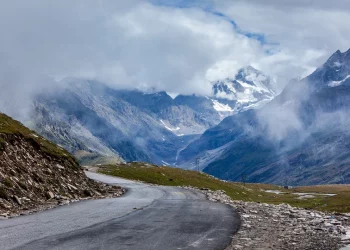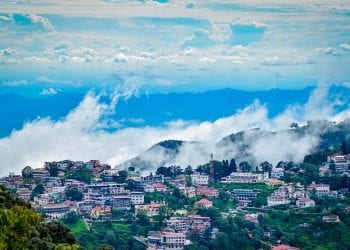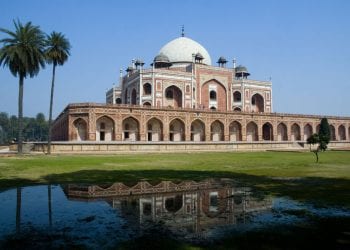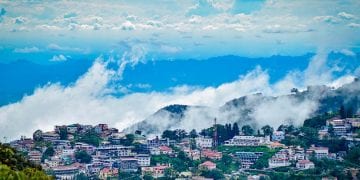Shillong: Everlasting Romance for All Seasons
Meghalaya or the ‘abode of the clouds’ is a mesmerizing land. Beneath these legendary clouds are magical forests, cascading waterfalls, gently rolling hills, furious rivers, mysterious caves, and the warmest people. Its beautiful capital Shillong exudes a certain romance especially in its striking similarities with the Scottish Highlands. The best time to visit Shillong would be anytime you fancy in the year – with summer temperatures at 25 degrees Celsius and winter of 16 degrees Celsius.
Visit Shillong in summer for clear views, in the monsoons for epic Meghalaya rains, autumn for cherry blossoms, and winter for Christmas cheer! Having said that, it’s not uncommon to experience all four seasons in one day in Shillong! While stepping out, find a permanent slot in your backpack for an umbrella and a light sweater.
This cosmopolitan city derives its name from “Leishyllong”- the God who is believed to reside on the Shillong Peak which overlooks the city. Shillong is home to the Khasi, Jaintia and Garo tribes of Meghalaya.
Serenading the summers in Shillong
Shillong is a sweet song in the summer. Jimi Hendrix didn’t know half of what ‘Purple Haze’ meant unless he saw blooming Jacaranda trees in the Shillong summer! The cityscape is bathed in a horizon and carpet of purple. Lavender blooms of the Jacaranda are everywhere – in the trees, on the roof of cars and houses, sprinkled on footpaths, and carpets of purple on the ground beneath your feet!
The summer months in Shillong are from March to June. There’s plenty of sunshine outside and in everyone’s hearts, beautiful clear skies, and cool winds. The temperature stays between 15 to 25 degrees Celsius, making this the best time to visit Shillong for uninterrupted views and scenic drives. Try and explore the city on foot to make the most of this bountiful season. While there’s always a chance of rain in the ‘abode of the clouds’, you won’t be drenched and uncomfortable in the light, scattered rain showers of the summer.
Walk or drive around the city to some of the most famous tourist places in Shillong:
1. Mary Help of Christians Cathedral

Located in the heart of the town is the glorious Mary Help of Christians Cathedral. A vision in white marble and awe-inspiring stained-glass windows, the cathedral is a sanctuary for people who are followers of Catholicism. This grand cathedral sits on top of a hill, serenely watching over the town and its people. The cathedral is also located close to some of the most premier educational institutions in the city.
2. All Saints Cathedral
The All Saints Cathedral, with its colonial-style architecture and wooden roofs, is another beautiful location in the city. Set on lush green lawns and surrounded by old trees, this church is located opposite the State Central Library. Presently part of the Church of North India, it was earlier an Anglican Church. The original foundation stone of the Church was laid by his excellency Lord Northbrook, the Viceroy of India, in 1874.
3. Don Bosco Centre for Indigenous Cultures
The incredible tribes in the North-East have largely relied on oral traditions to chronicle their histories and cultures. The Don Bosco Centre for Indigenous Cultures in Mawlai is a splendid museum, making concerted efforts to document and preserve the traditions of indigenous tribes in the North East. The museum is spread over seven floors, with dedicated wings for art galleries, artifacts, traditional attire, weapons, ornaments, and architecture of the different tribes in all the North-Eastern states. Truly one of the best places to visit in Shillong for a crash course on histories that never make it to school textbooks. The museum’s location in Mawlai – a quintessential Shillong neighborhood – is an added advantage.
4. Iewduh
Iewduh or ‘Barabazar’ is one of the oldest and largest traditional markets in North East India. A labyrinth of shops and stalls, this is a market where you can find almost anything – from vegetables, meat, kitchen utensils, clothes, and electronic items. Travelers who enjoy immersing themselves in local life will enjoy the magic and madness this market brings.
The markets in Shillong and across the state are the best places to glimpse Meghalaya’s unique matriarchal and matrilineal societies, where the dominant power in the community lies with its women. Most of the shopkeepers and shop owners, particularly in Iewduh, are all women.
Other popular markets in Shillong are Khyndai Lad or Police Bazaar which is a buzzing center in the middle of the city and Laitumkhrah, frequented especially by the hep and younger crowd.
5. Lady Hydari Park
Lady Hydari Park is a popular recreational area for Shillongites, who usually make their way here after church every Sunday. The park is named after the first lady of the province, Lady Hydari, and has beautiful lawns, gardens, and a mini zoo.
6. Ward’s Lake
Ward’s Lake is a small spot of calm located right in the middle of Shillong. The lake is perfect for a leisurely evening stroll or feeding the fish from atop a white, wooden bridge.
7. Umiam Lake
The sparkling waters of the Umiam Lake are literal postcard depictions of a quintessential Shillong experience. There is no better introduction to Shillong than this gorgeous man-made water body, located 16 km from the town. Fondly referred to as ‘Badapani’ by the locals, the lake is one of the most beloved spots for picnics and water sports. Tiny islands, coniferous forests, and gorgeous sunsets – give in to the charms of this stunning lake which is one of the best places to visit in Shillong.
8. Shillong Peak
At an elevation of 6449 feet, Shillong Peak offers a breath-taking birds-eye-view of the entire town. On a clear day, one can even spot the Bangladesh plains in the far distance. The viewpoint is one of the most famous tourist places in Shillong, where scores of people congregate for the best views over a steaming cup of red tea.
9. Laitlum Canyons
If you’re a traveler who will go anywhere for a good view, the Laitlum Canyons are the perfect place for you. Perch yourself on a hilltop with the most stunning views ever! Take in the beauty of deep canyons, gorges, valleys, and villages in the distance.
10. Mawphlang Sacred Grove
Landscape and nature are intimately connected to identities and culture in the North-Eastern states. This reverence for nature’s blessings is particularly seen in the Mawphlang Sacred Forest. This sacred grove should feature on your list of places to visit in Shillong. A site considered holy by the Khasi tribe, the trees in this forest have not been cut for over a thousand years. It is forbidden to carry back even a blade of grass or rock from the forest. Guided walks are permitted inside the forest.
11. David Scott Trail
The David Scott Trail is your best bet for a short hike close to Shillong. The trail was previously used as a horse track by David Scott, a British administrator. This picturesque trail is 16 km and takes an average of 4 hours to cover.
12. Shad Suk Mynsiem – A summer festival of celebration
Shad Suk Mynsiem translates into ‘The Dance of the Joyful Soul’. It is one of the most important festivals of the Khasi tribe. This annual thanksgiving dance festival takes place for three days in April. The dance is held to offer thanksgiving prayers for the bumper harvest. Thousands of Khasis gather for the celebrations. The festival is a riot of color and music, where men, women, and children dress in traditional attire and dance to the beats of traditional drums and pipes.
The time from March to June is the summer season here. Being a hill station, it is only natural that the hill city will have the maximum footfall during the summers. The city is filled with tourists mostly from Bengal and Assam, and some also come from North India as well as from South India. The most striking thing about Shillong is that although it is nestled close to the Himalayas, the mountains and hills here are mostly green and during the summers, it creates a very colorful and pleasant ambience. Those who love the mountains but not their ruggedness or the extreme cold will find Shillong ideal for this reason. Shillong is a major educational hub today with IITs and IIMs located here, along with a number of premier medical colleges. During the summers, the institutes are on holiday and students can be seen here loitering before the head home for the vacation, especially the out station students.
Summer in Sillong
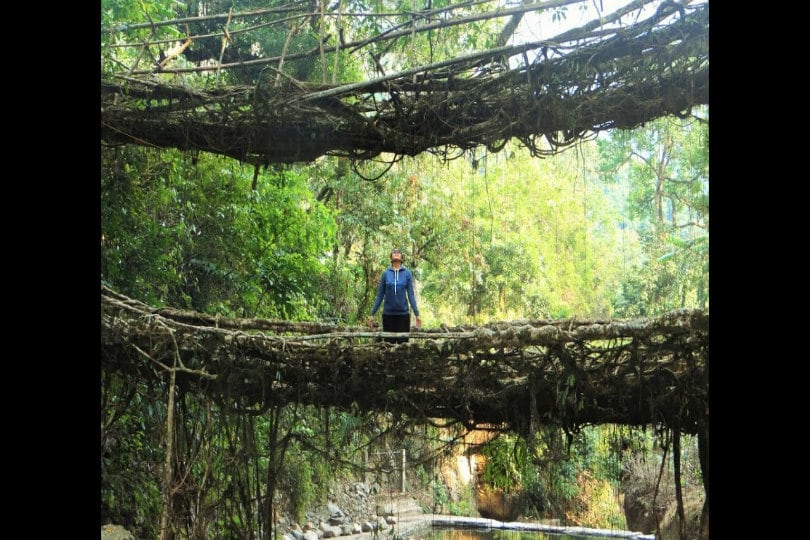
Shillong summers are the best to try out some adventure sports here bungee jumping and rock climbing are quite popular. These activities take place under experienced trainers. The popular Shillong tourist places are all open at this time of the year. The root tree bridge, one of the largest natural bridges in the world, which is created by entwining roots of bridge sees a lot of people coming here. The lakes of Shillong thaw at this time of the year and boating resumes again. It is quite an experience as the hills around are reflected in the lake and they are in fact so clear, that one can see the bottom of the lake and catch a glimpse of all the flora that resides at the bottom. Shillong is a great place to host bonfires and the summers, with its cool night, provide ample scope for them as you can stay outdoors without the freezing cold. Camping and trekking are popular activities here and the mountains are suddenly filled with backpackers, with all the trails open for them to explore. This is not always possible at other times of the year when snow has blocked passages during winters or there are landslides in the monsoons.
Monsoons in Shillong: A walk in the clouds
Visit Shillong from June to September to witness the city in all its rainy splendor. The skies may be grey but it’s never raining in the hearts of the locals. When rain brings everything to a standstill in other parts of the country, life in Shillong goes on merrily. ‘Tis the season to savor a steaming cup of Sha Saw (red tea) with some biscuits or cream buns. Watch children jump into small water puddles as they splash their way to school. Take in the rhythmic sea of moving umbrellas headed to different parts of the city. It’s business as usual in Shillong but with a little extra romance in the air.
The Monsoons are also the best time to visit Shillong for adventure enthusiasts and adrenaline junkies. It is a season when serene countryside of the summer transforms into a dramatic land – raging waterfalls and rivers, thick forests that seemingly grew overnight, trees drenched in astonishing levels of green, misty clouds that glide across the horizon.
As the month of June starts drawing to a close, the monsoons starts to set in on the hills. It is always advised that it is best to avoid the hills during the monsoons but those who want to stay behind or visit Shillong particularly within the time of July to September, are in for a great visual treat. The majority of the tourists start returning to their homes and the hills start feeling a bit desolate. Once the tourists have gone away, the local gear up for the monsoons and those who choose to come here at this time of the year get to experience a number of things that others missed out on. It is advisable to keep in mind that it is always good to have some sort of a back up while going to the mountains in the monsoons because landslides can be hazard. In an event of a major landslide, roads can be shut off for days. So is the case with Shillong. While the main city is well taken care of, in case of a land slide out of the city, your stay journey could still be put on halt while ascending or descending from the hills, and so it is advisable to have some buffer.
Once you have taken care of these practicalities, you will get to enjoy the full impact of greenery once the Monsoons set it. The hills turn the most vibrant shade of green that you have ever seen. It can be promised that you have never seen so much green before and it is truly awe inspiring. This is the best place to get close to nature. Naturally, the adventure activities are put on hold most of the camping trails are also close down. Nevertheless, this is the time to take a backseat from all that adrenaline and simply take in the marvels of nature. Rain in the hills is very different from rains in the plains and so you will have a very new experience. Be sure to carry raincoats and waterproof boots with extra grip if you plan to venture out of your rooms while it is raining. The footwear is especially important because you will need extra grip to climb the hills which are slippery from all that rain. If you are planning an extended stay in Shillong during the monsoons, then the first few days might take some getting used to. Rains tend to come down suddenly in sheets, but there are occasional bursts of sunlight as well. Drainage is Shillong is quite good, but during very heavy showers there are possibilities of water logging and flooding and this is the time tourists have to be careful because they are not used to such circumstances. Once you get used to it, with the rains falling outside, and you getting cozy under the covers with a book and a mug of steaming coffee, you will not want to leave
Cherrapunji
A trip to Shillong would be incomplete without visiting Cherrapunji, a place that receives the second-highest rainfall in the world! The best time to visit Cherrapunji is in the monsoons – when the skies pour down generously, the land is bursting in green, and you find yourself surrounded by misty bliss. Located 53 km away, it is best to plan an overnight stay to make the most of one of the best destinations close to Shillong.
The famous Double Decker Living Root Bridge is located close to Cherrapunji. A wondrous living structure, where the roots of trees have been artfully trained by the villagers to grow as bridges.
The Nohkalikai waterfalls are located at a distance of 5 km from Cherrapunji. Gushing down from a height of 1100 feet, the waterfalls are at their glorious best during the monsoon! The viewing gallery is a perfect vantage point to enjoy the panoramic views of the waterfalls and its surroundings.
Find Best Hotels In Cherrapunji
Elephant Falls
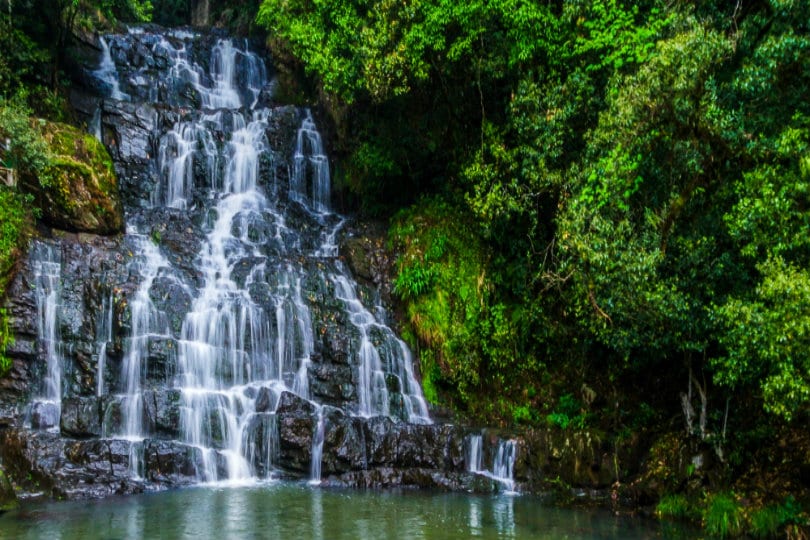
Elephant Falls is one of the most beautiful waterfalls in the city. Its cascading waters flow down three tiers of rocks, converging into a tranquil pool at the bottom. The waterfall was named by the British after a massive rock nearby with uncanny resemblances to an elephant. The rock was destroyed in an earthquake, but the name lives on.
Autumn in Shillong
Mellow, light, chills in the air, and infinitely charming. Shillong does Autumn exceedingly well. The purple Jacaranda of summer is replaced by sprinklings of pink Cherry Blossom across the city. But with all things too beautiful to be true, the pink blossoms are there one minute and gone the next. Autumn is a short season in Shillong, usually beginning in October. There’s no telling when Autumn ends and Winter begins in Shillong.
Autumn is the best time to visit Shillong for festivals. NH7 Weekender and Shillong Autumn Festival are two major events that happen during the season. Numerous other festivals pop up across the city, from wine and food festivals to quaint farmers’ markets. The Nongkrem Dance is a festival of harvest thanksgiving that takes place every November.
Winters in Shillong
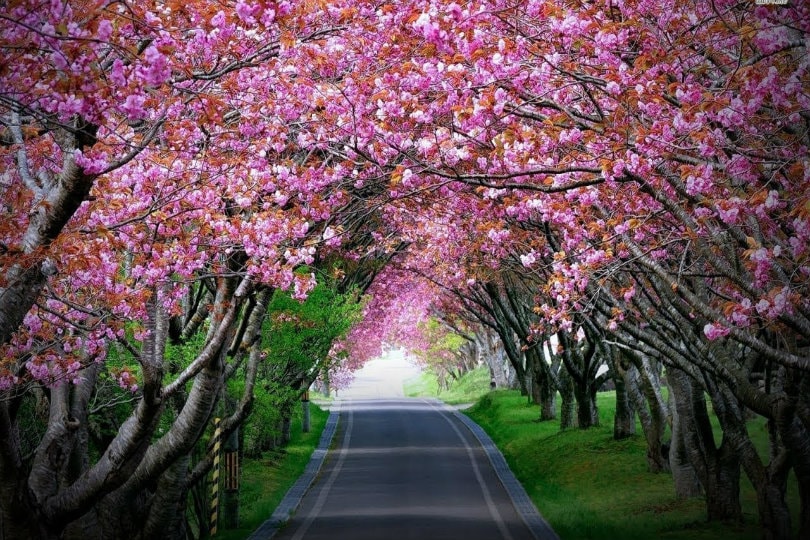
Winters in Shillong are cold but certainly not debilitating. The temperatures stay between 2 to 22 degrees Celsius. It begins to look a lot like Christmas starting early December. The aroma of cakes and cookies fills the air. Markets and shops in the city are beautifully lit for Christmas and New Year. Shillong is always a magical place but even more enchanting in the winter.
The winters in Shillong are again another pleasant time of the year and it lasts from about November to February. October is the autumn season here and tourists from West Bengal especially come here because of the vacation of the Durga Puja, which is also celebrated with great pomp in the hills. The weather starts clearing and the first nip of the cold in the air starts to set in. After the Durga Puja and the Diwali, the majority of the tourists start going back but those who want to experience the cold and the surreal winters in the mountains start coming here. November draws tourists because of the Cherry Blossom festival, which are in full bloom at this time of the year. Experts from Japan, where cherry blossoms grow in huge numbers, have also come here and remarked on their beauty. The streets of Shillong look all bright and pink and it creates the perfect ambience. The trekking routes and camping trails also start to open up for a while, before they are shut down again in event of heavy snowfall, which often happens in the upper regions of Shillong. However, it is during the Christmas and the New Year that all the fun starts to take place. The churches in Shillong are brightly lit up and coffee, hot chocolate and cookies and breads puddings are made in huge numbers. Moreover, Shillong is known as the Rock Capital of India, and a number of bands come here to perform at this time of the year, also international ones. Rock music festivals are held and naturally a great number of youngsters descend upon the hills. Good food, great music, lovely weather and a great crowd define Shillong during the winters. When Christmas arrives, the mountains seem to resonate with the choirs and the bells from the various churches and it is quite an experience. In fact, it is quite easy to imagine that you are not even in India!
A guide to food in the city
Shillong has numerous restaurants that cater to both vegetarian and non-vegetarian palates. But the best food trail will lead you to the small Jadoh stalls that serve traditional Khasi food. These tiny Jadoh stalls can be found in major markets such as Laitumkhrah, Police Bazaar, and Iewduh. There are also many stalls along the highways and main roads in the city.
The food at Jadoh stalls is a carnivore’s paradise. Vegetarians will find options too but it’s slim pickings. Those who are easily squeamish should probably avoid local food or exercise respectful caution. From rice cooked in chicken blood to fermented soya beans that taste divine but smell like hell. A trip to the Jadoh stalls is a sensory and culinary adventure unlike any other.
- Jadoh: A Khasi dish which is a mixture of rice and pork, with onions, garlic, turmeric, and ginger. A Khasi biryani if you will, only lighter on spice.
- Ja Stem: A dish made of rice, turmeric powder, and black sesame paste
- Tungrymbai: An epic pungent-smelling side dish made with fermented soya beans, black sesame paste, and a mixture of spices. The smell some would say is to die for – both literally and otherwise. But the taste is unparalleled!
- Dohneiiong: A delicious pork curry with a black sesame seeds base.
- Dohkhlieh: A simple but delicious salad made with boiled pork, onions, chilies, and ginger
Restaurants in the city
Some of the best restaurants in Shillong are Café Shilong, City Hut Dhaba, Dylan’s Café, Barbeque Restaurant, Munchies, The Grub by Sam & Bee Oliver, Jadoh, and The Lounge at Tripura Castle.
The restaurants serve a range of cuisines from Khasi, Chinese, Indian, Continental, to Italian.
Getting there
By Air: Lokpriya Gopinath Bordoloi International Airport, Guwahati
By Train: Guwahati Railway Station
By Road: Numerous buses and cabs ply from Guwahati to Shillong regularly
Wrapping up
Visit Shillong for the best hill station holiday in the country! Gorgeous, untouched beauty for nature lovers. Fascinating historical treasures for culture vultures. Blending hip and contemporary, elegant fine lines of history, and rich indigenous cultures – Shillong is definitely where you need to be!
Recent Posts
Top Picks
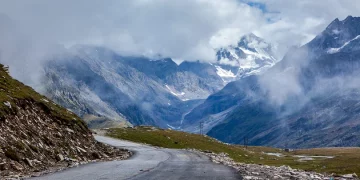
- OYO
 15 April, 2024
15 April, 2024 - Cultural Tour

- OYO
 15 April, 2024
15 April, 2024 - Cultural Tour

- OYO
 15 April, 2024
15 April, 2024 - Cultural Tour

- OYO
 15 April, 2024
15 April, 2024 - Cultural Tour

- OYO
 15 April, 2024
15 April, 2024 - Cultural Tour

Please rotate your device
Please go back to portrait mode for the best experience



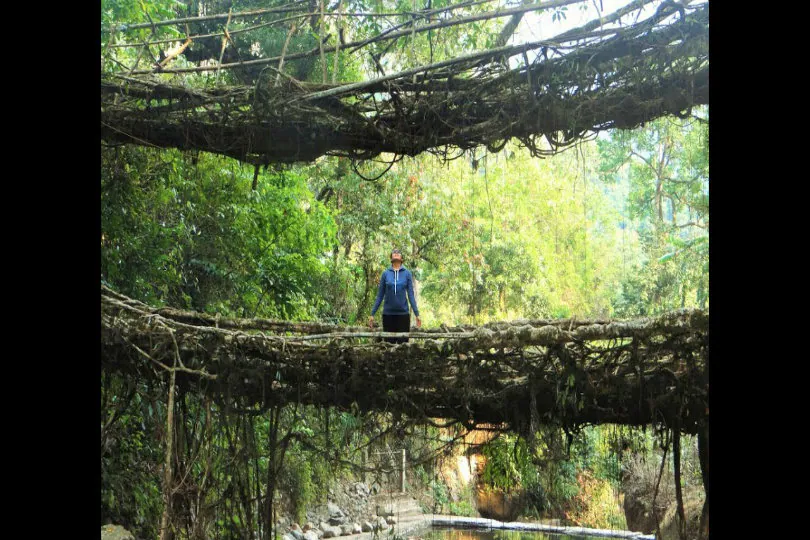

 April 15, 2024
April 15, 2024 